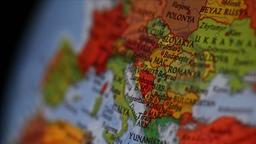I was pleased by what I saw in Rawabi. The Palestinians are driving a nail in their very old Palestine and building a new city.
A new Palestinian city is rising between Ramallah and Nablus. Rawabi is the name of this new project. I was there last week. I spent three hours there and returned to Turkey. What I saw did not disturb me as much as the towers of Turkey’s Housing Development Administration (TOKİ). Rawabi is in a sense a mass housing construction project, but it did not bother me at all. In fact, what I saw raised my hopes for the future of Palestine. Let me share with you what I thought while I toured Rawabi with Bashar, the owner and the mastermind of the project.
Palestine, when you go from the west to the east, first rises from the coast to the mountains and then goes down into a desert. A few years ago I read Raja Shehadeh’s Palestinian Walks,in which he wrote about his nature walks around Ramallah, where he lived between 1978 and 2005. He said that the view you see while walking east toward Nablus has not changed since the time of Christ. But lately, he said, the Israeli settlements in the West Bank have been building huge apartment complexes on the Palestinian hills. The view of the Palestinian plains was changing because of the gigantic housing development projects.
That’s why the sub-title of his book was “vanishing landscapes.” But I just liked the changing view at Rawabi. There are two reasons. First, up until today, such housing development projects were carried out exclusively by the Israelis. Rawabi is the first Palestinian settlement in the West Bank. Palestine is adding a modern city to the old ones. The Palestinians are driving a nail in Palestine. Travelling from Ramallah to Nablus, huge buildings greet you beyond the hills. But this time, you see a huge Palestinian flag waving above, not an Israeli one. Up on the hills a gigantic development project of 16,000 houses is progressing. The cost of project is around $1 billion. Women constitute 30 percent of the employees, the same as Turkey’s female labor force participation rate. The project is carried out by the Palestinian private sector, with the financial support of the Qatari government. Qatar is supporting the Palestinian resistance not by talking, but by acting.
The second reason why I liked Rawabi is probably that they are building a city without walls, unlike the city towers within walls of the TOKİ. What I saw is that Palestine is building a large, smart city in harmony with the landscape of the plains. Rawabi has not only houses, but also theaters, schools, mosques, churches, sports facilities and shopping malls. The population growth in Palestine so far has given way to the vertical growth of old Palestinian cities, say Ramallah. The aim of Rawabi is to add new cities to old ones in a planned way. From this perspective, Rawabi resembles Modi’in in Israel. Modi’in was designed in 2003, as a housing development project for people who work in Jerusalem and Tel Aviv. Rawabi is built upon a similar framework. Its main objective is to build houses for professionals who work in Ramallah and Nablus. Rawabi is 15 minutes from Palestine’s best university, Birzeit, 25 minutes from Nablus, and 30 minutes from Ramallah. Just like Modi’in.
The project gives us not only a reference point concerning the future of Palestine, but also contributes to the Palestinian economy at the present time. About 17%of Palestine’s labor force works in the construction sector. Hundreds of Palestinian construction companies work for this project alone. A large group of companies work jointly as none of them has the means to undertake projects bigger than $5 million. Moreover, Israel supports the project. They were planning to bring a brickyard from Turkey to be located near the project site. They are trying to create non-existent sectors and businesses. In this process, Turkish companies are waiting not only as suppliers, but also as strategic partners in changing the landscape of Palestine. Just mark my words.
I was pleased about what I saw in Rawabi. Palestinians are driving a nail in their very old Palestine and building a new city. Second, I witnessed that the resistance is moving from destruction to construction. This made me even more hopeful about the near future. In our geography, no one has time to consider how to construct the future as everyone is occupied with quarreling with the past. Palestine, on the other hand, is moving in the right direction. Let’s hope the same for Turkey.
This commentary was published in Radikal daily on 03.09.2013





